Grunge Street Fighters
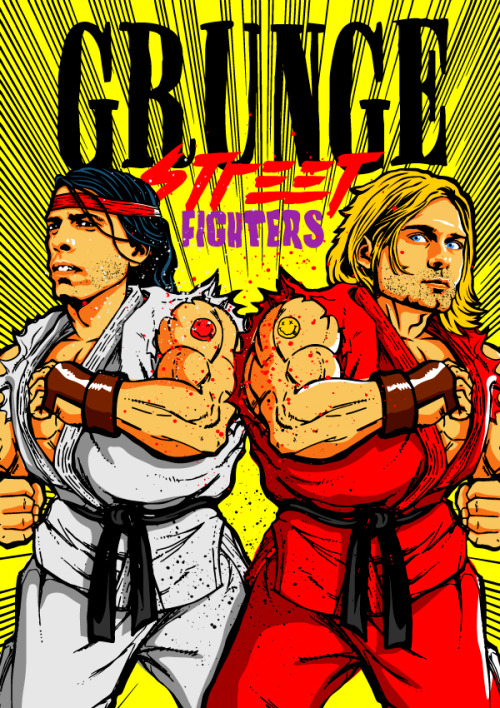

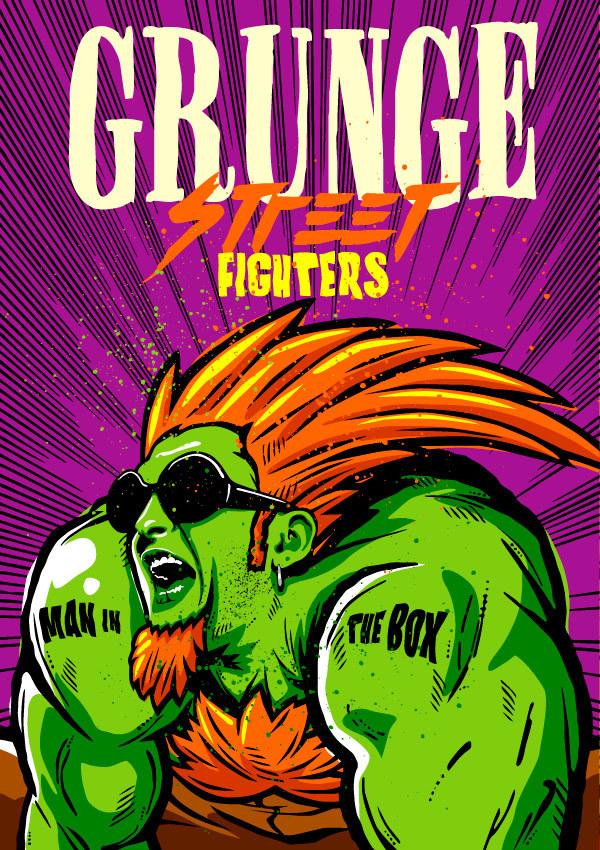
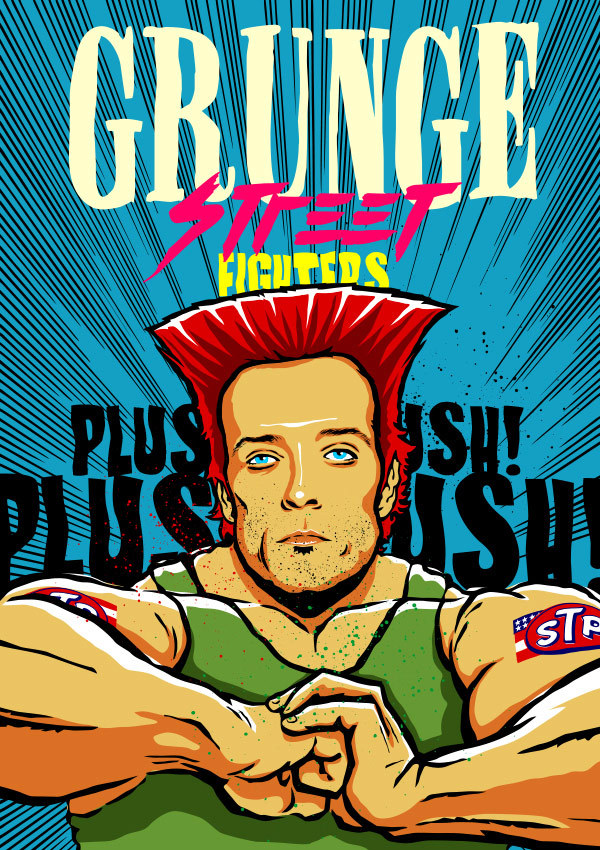
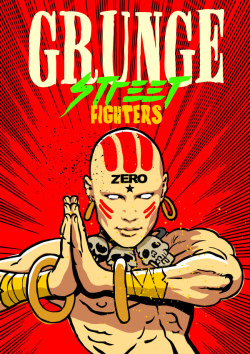
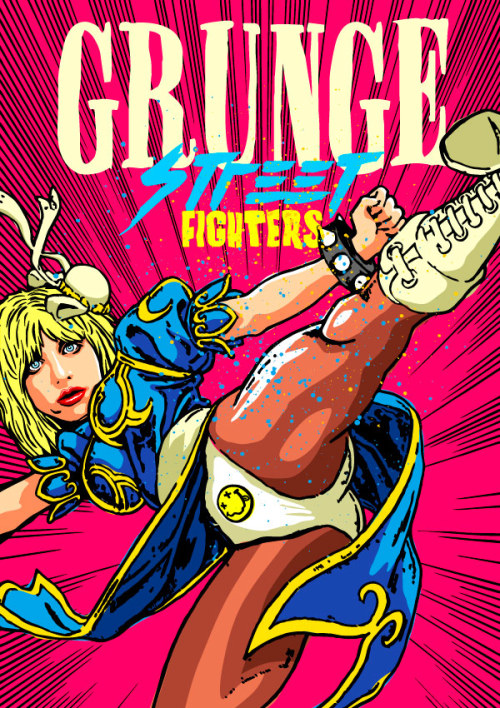







Ayer el aclamado NHL 14 fue lanzado en Norteamérica y con él vienen canciones muy notables incluyendo en la banda sonora del videojuego entre otros a Soundgarden con su «Been Away Too Long» tema que compartirá protagonismo con otros 14 escogidos para el videojuego.
NHL 14 aún no se ha lanzado en Europa y lo hará el 13 de septiembre.
EA’s annual release for their National Hockey League video game series NHL 14 was released in North America yesterday and with it comes two very notable editions included to the soundtrack of the game. Soundgarden’s “Been Away Too Long” were among the fourteen songs chosen for the game.
NHL 14 has yet to be released in Europe and will be on September 13th.

Con el lanzamiento de la reedición de In Utero por su 20º aniversario o con el DVD de Live and Loud puedes tener la oportunidad de tatuarte el logo de Nirvana. Los tatuajes están disponibles durante ochor horas en cada lugar y es necesario entregar algo que pruebe que has comprado alguno de los dos nuevos lanzamientos. (Aquí en España esta oferta no está disponible a no ser que queráis ir a Seattle a tatuaros). Los lugares son:
Silver Platters
2930 1st Ave. S.
Seattle, WA 98134
(Tatuadores: Myles Karr y Josh Egnew)
Looney Tunes Records
31 Brookvale Ave. West
Babylon, NY 11704
(Tatuadores: Alex McWatt and Jeremy Sutton)
Fingerprints
420 E. 4th Street
Long Beach, CA 90802
(Tatuadores: Matt Marcus and Jason Schroder)
With the purchase of the 20th anniversary In Utero reissue or the Live and Loud DVD you could be subject to one free Nirvana logo tattoo. Tattoos are available for eight hours at each location and it is required to bring a receipt to prove that you bought one of the new releases. You can do it at:
Silver Platters
2930 1st Ave. S.
Seattle, WA 98134
(Tattoo artists: Myles Karr and Josh Egnew)
Looney Tunes Records
31 Brookvale Ave. West
Babylon, NY 11704
(Tattoo artists: Alex McWatt and Jeremy Sutton)
Fingerprints
420 E. 4th Street
Long Beach, CA 90802
(Tattoo artists: Matt Marcus and Jason Schroder)

Sacado de // from: http://www.npr.org and http://portalternativo.com/
Bob Boilen de la radio nacional norteamericana (NPR) ha charlado con Dave Grohl y Krist Novoselic sobre la reedición de “In Utero”, el próximo 24 de septiembre.
De la elección de Steve Albini como productor:
Grohl: Tengo que decir que Steve Albini era realmente famoso por su sonido característico. El sonido que él lograba en sus álbumes, no era accidental. Es una ciencia lo que hace. Normalmente se reconocía en la batería. Así que si escuchas el primer álbum “Pod” o el “Surfer Rosa” de Pixies, o escuchas el álbum de Jesus Lizard, “Liar”, suena a una banda en la habitación pero hay una especie de elemento sónico que nadie lograba pillar. Y Steve Albini era el único que lograba ese sonido de batería.
Recuerdo que cuando estábamos haciendo “In Utero”, una de las cosas de las que Steve hablaba era tratar de o mezclar o ecualizar el sonido de la banda de un modo que pareciera natural – sin que la voz pareciera desconectada de la música. Creo que trataba de presentar la canción al oyente de un modo que sonara totalmente real. Pero de alguna manera embellecía las cosas de modo que lo hacía más potente. Es un tío brillante. Y hacer un disco con él, recuerdo llevarme el primer disco de Breeders, “Pod”, a Sound City cuando estábamos haciendo el “Nevermind” y decir, “Este es el sonido de batería”. Eso era algo con lo que siempre, no sé, era algo que siempre nos encantó o con lo que nos identificábamos, esas grabaciones de Steve Albini.
(Albini) era uno de nuestros héroes, tío. Era algo grande poder hacer un disco con él. Yo tenía los discos de Big Black y me encantaba “Surfer Rosa”. Hacer un disco con él era lo máximo. Y recuerdo que cuando entré ahí, estaba aterrorizado e intimidado porque su reputación era la de un tipo realmente cínico y terco – y había oído historias de que bandas le habían mandado su single y le pedían que les produjera su próximo disco y que él lo destrozaba y lo mandaba de vuelta sin carta. Cosas así. En plan, “¡Oh dios mío es el (Coronel) Kurtz de la industria musical! Esto es una locura; ha ido demasiado río arriba y se le ha ido!” Y llegamos ahí y es como un gatito. Es el tío más amable del mundo y lo pasamos de la hostia. Yo y él nos llevamos realmente bien porque nos gusta hacer el tonto. Pero recuerdo que, en un momento, cogí el limpiador y me lo tiré en la pierna mientras él estaba durmiendo una siesta en un sofá y me prendí fuego y entré gritando y le desperté con mi pierna en llamas y le dije, “¡Steve! ¡Steve! ¡Hay algo mal en el estudio!” Nos reímos. Luego, una noche, se volvió a dormir y fui a la sala de control y me tiré algo más (del limpiador de bobinas) en el sombrero me lo puse en la cabeza y entré con la cabeza en llamas, “¡Steve! ¡Steve! ¡Algo no funciona!” Y antes de poder terminar de decirlo, mi pelo empezó, ¡pude oír como mi pelo se quemaba! Me quité el sombrero y lo pisé y se me quedó mirando en plan, “Idiota”. Y lo clavé a la pared y con algo de cinta aislante escribí “Tonto”, habiendo un sombrero que decía “Tonto” ahí colgado en la pared. Volví 15 minutos después y había cambiado aquello para que dijera “Batería”.
¿Sabes qué recuerdo? Recuerdo que había un calcetín que Steve había llenado de patatas machacadas una noche que cenamos. E iba de un sitio a otro, yo se lo metía en su almohada una noche o quizá al día siguiente aparecía atado a mi silla de batería. Y llegué a casa (después de grabar el disco), abrí mi maleta y ahí estaba ese calcetín lleno de patatas (risas)
De las diferencias con “Nevermind”:
Grohl: Bueno, sabes, es una de las grandes cosas de grabar en lugares diferentes con gente diferente, poder experimentar su técnica o su sonido y grabar con Butch (Vig) fue muy diferente que hacerlo con Steve. Con Butch, hacíamos múltiples tomas y tratábamos de que las cosas sonaran como queríamos, trabajábamos en esas cosas, mientras que con Steve, te juro, hacíamos una toma y le dábamos al stop y decíamos, “Vale, ¿qué toca ahora?”
Novoselic: Teníamos que demostrarle a Steve. Así que, el primer día en el estudio (para “In Utero”), estamos ahí preparados y listos para ponernos y así, “Vale, Steve, grabamos, ¿no?” Y nos dice, “Grabamos”. Así que tocamos “Serve The Servants”. Y, ya sabes, Dave cuenta y dice “¡Bahhh!” Y la canción empieza bien. Y entonces tocamos la canción y, por supuesto, el final se derrumba como cada canción de “In Utero”. Así que acabamos la canción y Kurt y yo y Dave nos miramos en plan, “Si, eso ha estado bien. ¿Qué tal, Steve?” Y dice, “Suena bien”. Y le decimos, “¡Vale! Vamos con otra canción”, en una toma. Así nos ganamos a Steve.
De la grabación en la fría Minneapolis:
Grohl: Era febrero. A las afueras de Minneapolis. Temperaturas subárticas. Pero la habitación donde grabamos el material, esa habitación sonaba genial y era un lugar agradable. Y recuerdo estar sentado a la batería y Kurt a mi izquierda y Krist a la derecha y teníamos un aislamiento correcto y grabábamos juntos en directo.
Novoselic: Había una puerta corrediza de cristal entre tu y el ampli del bajo pero estaba a tu lado en la puerta de crist porque quería notar el bombo como si me diera en el pecho.
Grohl: Sabes, cuando grabas múltiples instrumentos en una habitación con múltiples micrófonos, el sonido de la habitación sangra en cada micrófono. Imagina que tienes un micrófono dirigido a una caja e batería o centrado en la boca del cantante: quieres tratar de coger o aislar esos micrófonos específicos para que no todo sangre en eso, si es que eso tiene algún sentido. Pero quieres estar en la habitación con todos para tener el rollo de tocar con esa persona.
Novoselic: Y Steve Albini tiene estas estrategias -y son bastante sofisticadas- sobre donde colocar el micrófono en la habitación y como lo colocas en un sitio. Y no usa ninguna clase de equipo. Lo llama reverb sintético y esto y aquello porque quiere lo auténtico. Es bastante orgánico: nada de modificaciones genéticas, nada de pesticidas, comida basura ecológica.
Sobre como cotactaron con Albini para las remezclas:
Novoselic: El hombre. Fuimos al hombre, Steve.
Grohl: Directamente a la fuente.
Novoselic: Fuimos a su estudio, Electrical Audio, en Chicago.
Grohl: Lleva chandal cuando trabaja. Azul. Bueno, algo grisáceo. Parecía cobalto en algún momento pero se fue perdiendo con los lavados. No estoy seguro. Trabaja en mono.
Novoselic: El lugar está aprobado por la ASSO (Administración de Seguridad y Salud Ocupacional). Es un ambiente super sano.
Grohl: También sirve esa clase de café que esos extraños lemures… Cuando se comen los granos, los cagan. Son carísimos y puedes hacer café con ellos. ¡Y son buenos!
Novoselic: El cobalto es realmente un color del momento. Me da la impresión de que los nuevos coches tienen alguna sombra de cobalto o un lila ahumado.
Grohl: Azul pelham, ese es un azul bonito también.
Novoselic: Anda metido en la textura. Steve está metido en las texturas. El disco lo remezcló con nosotros ahí. No lo habría hecho de otra manera. No remezcla un disco sin que la banda esté ahí.
De las sesiones de grabación:
Grohl: Lo que normalmente haces es, hay pistas básicas, y luego hay pistas sobrepuestas, asi que una pista básica sería Kurt, Krist y yo en la misma habitación. Y grabábamos la guitarra, el bajo y la batería en una toma. Y luego vas a la siguiente canción. Así que una vez has terminado las 13 pistas base, vuelves y la escuchas y piensas, “¿Le hace falta a esto una parte extra de guitarra? ¿A esto le hace falta percusión?” Y entonces empiezas a sobreponer cosas y si hay algo que necesitas rehacer o arreglar, lo haces. Pero al grabar con Steve, se hace lo mínimo en cuanto a superponer y hay los mínimos arreglos, y casi no hay percusión ni nada en el disco. Es una grabación realmente simple. Así que ya es solo cosa de Kurt de cantar todas las canciones y ponerle las armonías. No sé ni si tenía todas las letras. Recuerdo que había días en los que, no pasaba nada durante horas y simplemente nos quedábamos ahí, esperando que pasara algo, ¿sabes?
Novoselic: No había Auto-Tune, nada de pistas por ordenador.
Grohl: ¿Sabes qué recuerdo? Había ese material para limpiar las bobinas en el estudio y era como alcohol puro y altamente inflamable. Y empezábamos a hacer cosas como tirárselo a alguien en la pierna y prenderle fuego o tirárselo a la bota. Me tiré algo en la cabeza.
Aquellas sesiones no tuvieron nada de drogas y alcohol:
Novoselic: No, no.
Grohl: ¿Esto que es? ¿Behind The Music? ¡Vamos hombre!
Novoselic: No recuerdo ni una cerveza, ni maría. Nada.
Grohl: Yo había dejado de fumar hierba allá por 1990. Así que era un chico sobrio. Además, ¿donde vas a conseguir hierba en medio del invierno a las afueras de Minneapolis? ¡No estábamos haciendo un disco en Tuff Gong! Es decir, estábamos centrados; eso es lo gracioso. Creo que quizá la reputación de Nirvana era que éramos tres Sid Viciouses, Viciouseces, ¿como se hace el plural de eso? ¿Viscii?
Novoselic: Era una atmósfera familiar. Courtney (Love) vino con Frances (la hija de Cobain y Love). Y Courtney quiso añadirle una atmósfera familiar haciendo un asado, ¿te acuerdas? Y decíamos, “¡Oh, no!” Así que creo que desenchufamos el fogón y le dijimos que estaba rota. Y le dijimos, “Oh, el fogón no funciona”.
Del resulado final:
Grohl: Una de las razones por las que un álbum como “In Utero” aún suena fresco hoy día es porque es el sonido de tres personas. De verdad que lo es. Hay imperfección e inconsistencia, ¿sabes? No lo cepillamos ni lo pulimos y limpiamos y te lo presentamos. Lo grabamos, a veces solo una vez y entonces decidimos que eso era lo que necesitabas oír porque es real de esa forma. Y creo que cuando oigo una canción de “In Utero” en la radio entre otras grabaciones modernas, destaca, ¿sabes? Porque suena a nosotros, la única gente que sonaba como nosotros, éramos nosotros, ¿sabes? Así debería ser un músico. Un músico solo debería sonar como lo hace y no hay dos músicos que suenen igual. Es un rollo individual, ¿sabes? Es una de las grandes cosas de ese disco. Creo que logramos lo que creo que queríamos hacer. Había una integridad en nuestra banda que queríamos que las cosas fuesen reales, honestas, reales y eso es “In Utero”. Es eso completamente.
Novoselic: “In Utero” es un testamento de la visión artística de Kurt Cobain. Es una especie de disco raro y es extrañamente bonito al mismo tiempo. Y si miras los cuadros y dibujos de Kurt -llegó a hacerme una escultura- es una persona tensa y de alma torturada. Es raro. Está bien hecho pero es como lo que decía Dave sobre tener tu propio sonido. Kurt era un compositor genial. Sabía que tenía oído para el gancho y era un gran cantante, gran guitarrista e “In Utero” es una buena representación de lo que le gustaba en el arte y como se expresaba.
Few bands ever reach the popularity, influence and status of the early-’90s rock group . Anyone who’s old enough to remember knows that the trio from Aberdeen, Wash., helped pioneer grunge rock. But more than that, Nirvana became a symbol for an entire generation of ideas and popular culture, from fashion and art to our collective conversations about the way young people were making sense of the world back then, and how they saw their place in it.
Remarkably, Nirvana did all this in a very short period of time, from about 1987 to 1994, and only released three albums during that period. The last one the band released — about a year before singer Kurt Cobain took his own life — celebrates its 20th anniversary this year. The album, In Utero, is being reissued with some remarkable additions: There’s a remastered version of the original record, a remixed version, a DVD, a disc of live recordings, a bunch of previously unreleased demos, and tons of photos and liner notes.
All Songs Considered‘s Bob Boilen and Robin Hilton spoke recently with Nirvana’s two surviving members, drummer Dave Grohl and bassist Krist Novoselic, about the making of In Utero. The two shared their memories from when they were just kids in the studio, piecing together what would become the band’s last studio album.
You can hear our interview, and the unreleased songs, by clicking the audio link on this page. Or you can read a full transcript of our conversation — and stream the individual tracks — below.
Dave Grohl: Well, let’s see … in 1993 I was listening to a lot of The Jesus Lizard, which was a great band that Steve Albini also produced. I think I was also listening to … I was still listening to that last album, or there was maybe that first Frank Black solo record, which came out around that time, too.
Bob Boilen: Maybe if you pick something off of that Jesus Lizard, since it’s a Steve Albini production. We can talk about something in the sound that attracted you.
Grohl: I gotta say, Steve Albini was really famous for his signature sound. The sound that he got on his albums, it was no accident. There’s a science to what he does. It was usually mostly recognized in the drums. So if you listen to the ‘ first album Pod or the Pixies’ Surfer Rosa, or you listen to the Jesus Lizard album Liar, it sounds like a band in the room, but there’s some sort of sonic element to it that nobody else could get. And Steve Albini was the only guy who could get that drum sound.
Boilen: Let’s listen to some of that — because we’ll hear some on In Utero. Let’s listen to some of The Jesus Lizard and hear the drums, and then we can talk about the specifics and how he did it.
Boilen: You really do feel — especially coming off of the drum sounds of the 1980s, they were monstrously compressed and in your face — you really do get a sense of a big, open, spacious thing going on on drums here, and we’ll play some of In Utero and hear some of that, as well. Would that be a good characterization of the difference there?
Grohl: Yeah, I think so. You know, I remember when we were making In Utero, one of the things that Steve talked about was trying to record or mix or equalize the sound of the band in a way that seemed natural — without the vocals seeming disconnected from the music. Like, I think what he tried to do was present the song to the listener in a way that sounded entirely real. But he would kind of embellish things in a way that made it more powerful. He is a brilliant dude. And going to make that record with him, I remember taking the Breeders’ first album Pod to Sound City when we were making the album Nevermind and saying, «This is the drum sound.» Like, «That’s the sound. We love that sound! It’s a great sound!» That was always, I don’t know, it was something we always loved or related to, those Steve Albini recordings.
Boilen: Did you feel disappointed in the drum sound on Nevermind?
Grohl: No, dude, that record sounds great! I wouldn’t change a thing.
Boilen: But the sound is so very different. It doesn’t sound like the Steve Albini sound. That kick drum has heavy compression on it; it is really a different sound than the Albini sound. That’s why I ask.
Grohl: Well, you know, it’s one of the great things about recording in different places with different people, is that you get to experience their technique or their sound, and recording with [producer] Butch [Vig on Nevermind] was a lot different than Steve. With Butch, we would do multiple takes and we would try and get things to sound the way we would like, really craft these things, whereas with Steve, I swear, we’d do one take and he’d hit stop and say, «OK, what’s next?»
Krist Novoselic: We had to prove ourselves to Steve. So, on the first day at the studio [for In Utero], we’re all set up and ready to go and like, «OK, Steve, we’re rolling, right?» And he goes, «We’re rolling.» And so we play that song «Serve the Servants.» And you know Dave counts us in and just goes, «Bahhh!» And the song starts OK. And then we play this song and, of course, the ending falls apart, like every song on In Utero. And so we finish the song, and Kurt and Dave and I look at each other and we’re like, «Yeah, that felt pretty good. How was it, Steve?» He’s like, «Sounds good.» And we’re like, «All right! We’re going to do another song,» like in one take. We won Steve over after that.
Boilen: It sounds so good. To so many people that don’t know about recording and technique, the idea is … I guess the question would be, what’s so complicated about throwing a band in the room and just recording them? And, of course, it presents all sorts of problems when everybody’s in the same room. Isn’t that the mega problem that engineers face?
Grohl: I think so. I mean, it depends on what you want to do. But for the noise we made in the room, separation and isolation was usually a good idea. If you put the three of us in a room with microphones and hit «go,» it would just sound like, «bahhhh.» I remember that room was such a beautiful place to record in, too. If you’ve ever seen pictures of the studio or the house, I’m sure it’s a beautiful place to hang out in in the summertime. Unfortunately, we were there in February. It’s outside of Minneapolis. It was, like, subzero arctic temperature. But that room where we recorded the stuff, the room sounded great and it was a comfortable place to be. And I remember sitting at my drums and Kurt was to my left and Krist was to my right, and we had proper isolation and we would track live together.
Boilen: Describe what it means for proper isolation to somebody that doesn’t know what it means. Is it foam or is it glass? What’s between you and him?
Grohl: Well, there were probably some sort of baffles.
Novoselic: It was a sliding glass door between you and the bass amp. But I stood on your side of the sliding glass because I wanted to feel the kick drum, like, in my chest.
Grohl: Feel the power in your heart and your mind and soul!
Novoselic: I wanted to feel the power. That’s it.
Grohl: You know, when you’re recording multiple instruments in a room with multiple microphones, the sound of the room is bleeding into each microphone. Say you have a microphone that’s pointed at a snare drum or is pointed at a singer’s mouth: You want to try to contain or isolate those specific microphones so that not everything is bleeding into those, if that makes any sense. But you do want to be in the room with each other, so you can get the vibe of playing with that person.
Novoselic: And Steve Albini has these strategies — and they’re rather sophisticated — about where you place the microphone in the room, and how you put it in one place. And he doesn’t really use any type of, like, equipment. He calls it synthetic reverb and this and that, because he wants the real thing. It’s very organic: non-GMO organic, no pesticides, labor-friendly junk food.
Boilen: There was a moment before you got there that the band … Robin, you’ve got the letter. The [20th anniversary In Utero] box set has all this stuff…
Robin Hilton: Yeah, let’s talk about it real quickly. There’s a remastered version of the original album. It’s been remixed — Steve Albini remixed it for this edition — tons of demos, previously unreleased tracks, a disc of live cuts, a DVD, and there really are some amazing liner notes. And it includes a five-page letter that Steve Albini wrote you guys before you even got in the studio with him. And I can just read the opening graph. It’s a single-spaced, typed, five-page letter: «I think the very best thing you could do at this point is exactly what you’re talking about doing: bang a record out in a couple of days with high quality but minimal production, no interference from the front-office bulletheads. If that is indeed what you want to do, I would love to be involved.» Then he closes by saying, «If a record takes more than a week to make, somebody’s f—-ing up.» So you guys did this in two weeks, yeah?
Novoselic: We didn’t screw up, though! We recorded and mixed in two weeks. We moseyed along, though. We were also well-prepared. We developed a great work ethic. We had a great work ethic. We would rehearse a lot. We were coming in and blasting out songs in one take, two takes, three takes at the most.
Hilton: The remixed versions, I’m really curious to hear what you think of these newly remixed versions that Steve did for this release. I’m really hearing a lot of things I’ve never heard before, little details — like, he added Kurt’s voice to the top of «Serve the Servants.» I noticed «Dumb» loses most of the string parts. It comes in at the end, but it’s not throughout the body of the song. I’m wondering if you saw these remixes as a chance to fix things you weren’t happy with, or a chance to re-imagine how it could all sound.
Novoselic: In Utero, with the remixes, just breathes a little more now. It was a little squished-sounding [before], I thought. And, well, it’s remastered now; the original is remastered now.
Boilen: Tell people what that means, because it’s always very complicated for people to understand.
Novoselic: When you remaster something, and it was remastered at Abbey Road in London … so, when you record a record, there’s, like, different levels and frequencies on each individual track. So when you master a record, you give it some uniformity where it doesn’t, like, blow someone’s speakers. One song’s super-loud, the next one’s super-quiet, or whatever. It just kind of evens everything out. And you put some EQ on things — that’s what mastering is. But we went one step beyond that and remixed the record, too. So it was on multi-tracks and it was not done on a computer. There was no clicking or dragging — there was no «Command-V» or «Command-C.» We weren’t on hold with service people in Mumbai, India, «Oh no, it’s crashed again! Hit Control-Alt-Delete! No, we tried that, we tried that!» «Unplug it and plug it back in.» «OK, but the bass amp is going to go out if we do that!» But, anyway, it was all done on tape. And, again, that’s Steve’s way. And it was all set up in the recording. So, the way those microphones were stationed around the room, and we just, we were listening to each individual track. So, like on «Serve the Servants,» it was listed on the track sheet: guitar, guitar 2. And it was like, «Whoa, we never used this in the mix we did.» So we listened to it, and on the remixed [version], there’s a different guitar solo. And we worked with, like, some vocals and just kind of freshened it up. And I listened to The Doors — there was a Doors anthology remix, The Future Starts Now, I think it’s called, where they remix the songs. And that’s where I got the idea. I go, «Well, The Doors sound all nice and fresh for the 21st century, and it’s the 20-year anniversary [of In Utero], so it’d be a good time to try something similar.»
Boilen: So did you approach [Albini] to do the remixes?
Novoselic: Absolutely. The man. We went to the man, Steve.
Grohl: Straight to the source.
Novoselic: We went to his studio, Electrical Audio in Chicago.
Grohl: He wears a jumpsuit when he works.
Boilen: What color?
Grohl: Blue. Well, sort of like a grayish. It looked like maybe it was cobalt at one point, but it faded in the wash. I’m not sure.
Hilton: Does he put orange hazard cones around the chair he sits in?
Grohl: He works in a onesie.
Novoselic: The place is OSHA (Occupational Safety and Health Administration) approved. It’s a super-safe environment.
Grohl: He also serves that kind of coffee that those weird lemurs … when they eat the beans, then they poop them out. They’re very expensive, and you can make coffee with them. And they’re good, too!
Novoselic: Cobalt is like a really happening color now. I feel like all the new cars have some shade of cobalt and kind of a smoked purple.
Grohl: Pelham blue, that’s a nice blue, too.
Novoselic: He’s into texture. Steve is into textures.
Hilton: So, you guys were sitting in on the remixes, then? You were with Steve when he did them?
Novoselic: Absolutely. He wouldn’t have it any other way. He wouldn’t remix a record without the band there.
Boilen: So, let’s walk it through. We’re back in Minnesota and we’re in February and it’s ’93. You’d bust out a couple of songs in a day. Would you then try and go ahead and mix some of them, or was everything just performance, performance, performance?
Grohl: I think at first it was performance. We finished the drums in the first maybe three or four days, and then I think maybe after that it was bass and guitar stuff?
Novoselic: I maybe changed a few things here and there on the bass, and then there was Kurt, and he did his vocals.
Boilen: Wait a minute: I’m confused about something, because we just talked about the fact that the band was in the same room at the same time, and now you’re telling me that people are doing parts separately. You do the drums in three days?
Grohl: Usually what you do is, there are basic tracks, and then there are overdubs, and so a basic track would be Kurt, Krist and [me] in the same room. And we would lay down the guitar, bass and drums in one take. And then you’d move on to the next song. So after you’ve done 13 basic tracks, then you go back and you listen and you think, «Does this need an extra guitar part? Does this need percussion?» And then you start overdubbing things, and if there’s anything that you need to redo or fix, then you can do that, as well. But recording with Steve, there’s minimal overdubbing and there are minimal fixes, and there’s hardly any percussion or anything on the record. It’s a really simple recording. So then it’s just a matter of Kurt going in and singing all of the songs and putting harmonies on. I didn’t even know if he had all his lyrics. I remember there were some days where, like, nothing would happen for hours and we’d just be sitting, waiting for something to go down, you know?
Novoselic: There was no Auto-Tune, no comp tracks.
Grohl: You know what I remember? There was this stuff that they used to clean the tape heads in the studio, and it was like pure alcohol and incredibly flammable. And so we started doing things like pouring it on someone’s leg and lighting their leg on fire, or pouring it on someone’s boot. I poured some on my head.
Novoselic: Flaming cymbals are so cool.
Grohl: Ask Gibby [Haines, founder of the Butthole Surfers, who often put kerosene on cymbals and lit them during live performances]. Yeah, a lot of time spent doing absolutely nothing, too.
Hilton: It’s interesting to hear you say that sometimes you’d be recording and Kurt hadn’t even worked out the lyrics yet, because there are some really cool demos in this 20th-anniversary set, and most of the demo tracks don’t have any lyrics on them at all. And I thought we could play a little bit of «All Apologies,» the demo for that, because it sounds like Kurt is still trying to work out the lyrics on it. Could we just hear a little bit of that?
Boilen: Sounds like they didn’t have his vocal mic on. It sounds like he was somewhere in some room just near some open mic, right?
Boilen: Oh, that’s why the tape speed is so odd, too, right?
Novoselic: Yeah, that’s what we got. So the [20th-anniversary] re-release is about, you know, those kinds of things. Fans really like those little chestnuts like that.
Hilton: Are there any surprises that came out for you in the remixing of these songs; anything that surprised you in any of the tracks?
Novoselic: [Long pause.] No…
[Laughs.]
Novoselic: It was all there. It was like, it’s so straight-ahead: It’s an old-fashioned record in some ways, like it was before the Internet. We made this record before computers. And, again, it’s nice to have it breathe a little bit. So we just pried it open a little bit. And that was the mission: Kind of open the windows and kind of freshen it up.
Boilen: So you spend like two weeks in Minnesota. You do these recordings. You come home and everybody seemed pretty happy when they walked out the door, right?
Grohl: I think so.
Novoselic: We were out of the woods of Minnesota.
Grohl: Yeah, we were happy to be the hell out of there!
Novoselic: Because we were from Washington. Western Washington has a mild climate. We’re just not used to those cold temperatures.
Grohl: You know what I remember? I remember that there was this sock that Steve had stuffed with mashed potatoes.
Boilen: Sorry, you said sock? S-o-c-k?
Grohl: Yeah, there was a sock that Steve had stuffed with mashed potatoes from dinner one night. And it was going back and forth from, I put it under his pillow at night, or then maybe it’d wind up on my drum stool the next day.
Novoselic: Ew.
Grohl: And I got home, I opened up my suitcase, and that sock full of mashed potatoes was in there.
[Laughs.]
Boilen: That’s a beautiful love message, I’d say.
Grohl: You know, he and I really hit it off.
Boilen: The winter that was! So, do you come home with tapes, in other words?
Novoselic: We came home with cassettes. And we had this really raw and intense record. And then the conversation started regarding the obligations [we had] of being a No. 1 band on the radio and on the charts.
If you want to read more: